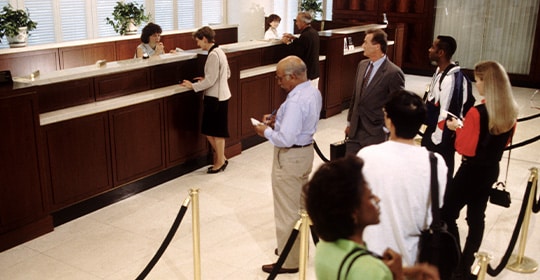Research Everything IT
RECENTLY ADDED
Read the Latest in the Research Hub
TRENDING
What Other IT Pros are Researching
View All

Sep 16, 2022
Networking
Why You Should Consider an Upgrade to Wi-Fi 6 or 6e
article
3 min
A wireless upgrade can help organizations meet users’ growing demand for connectivity.


Oct 03, 2022
Security
Don't Get Hooked: Avoid Becoming the Bait of a Phishing Email
article
3 min
Take a look at this infographic to learn what to look out for in a suspicious email.


Sep 23, 2022
Digital Workspace
Conversation Design Puts AI One Step Closer to Humans
article
4 min
Conversation interfaces can enable customer interaction with automated systems more naturally.


Sep 09, 2022
Cloud
When a DDoS attack comes, defend your applications with an AWS firewall
article
3 min
CDW Managed Services for AWS protects customer web applications using AWS WAF Security Automations.
SECURITY
Create a Secure Digital Environment
Helping to protect you—and your end users—from security breaches.
Collaboration
A Digital Workspace for New Ways of Working
View All

Mar 31, 2025
Digital Workspace
Elevate Your Cybersecurity With CDW Managed Services
Webinar
1 min
Explore how CDW’s new offerings safeguard your business with expert-driven solutions from Microsoft.


Mar 31, 2025
Digital Workspace
Building a Foundation for Smarter Device Management With Windows 11 Pro Upgrade
Use Case
3 min
During rapid growth, managing devices is no small task. Discover how CDW partnered with a civil engineering and consulting firm to streamline device management, strengthen security and prepare for future expansion, including Windows 11 updates.


Mar 31, 2025
Digital Workspace
A Next-Generation Contact Center Powered by Amazon Connect and ServiceNow
Use Case
3 min
Read how CDW helped a women’s healthcare provider modernize its contact center to enhance call routing efficiency and improve patients’ experience.


Mar 31, 2025
Digital Workspace
Cost-Effective Generative AI Integration in Google Workspace
Article
3 min
Discover how CDW enabled a mortgage company to enhance productivity with Gemini for Google Workspace, delivering seamless integration and securing budget-friendly solutions.















































